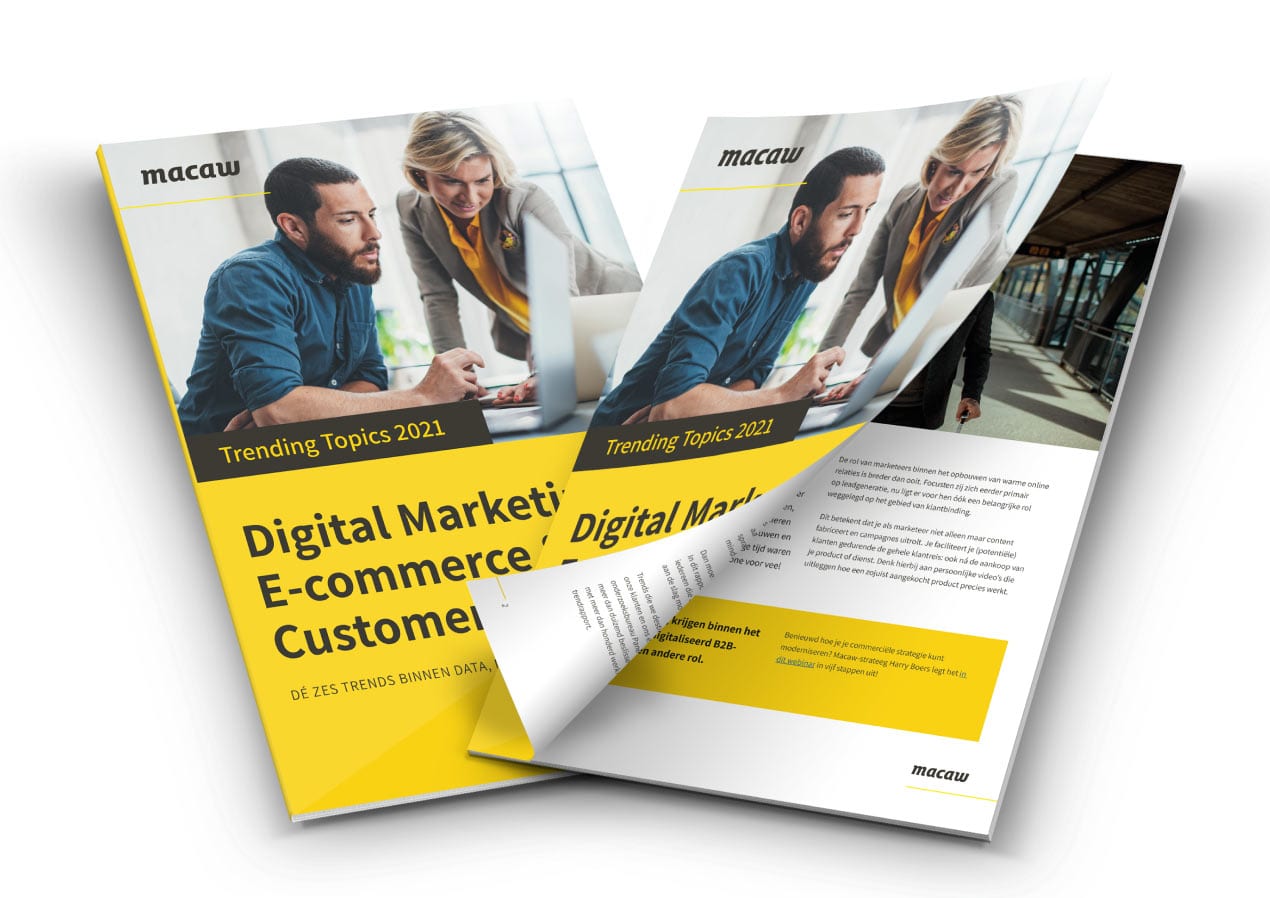The coronavirus crisis and Amazon’s entry into the European market ensured that B2B e-commerce – via marketplaces or otherwise – moved on a lot in 2020. What do you need to pay attention to as a B2B marketing and sales department in 2021? Here are five points to consider.
B2B e-commerce trends
E-commerce and B2B used to be a fairly unusual marriage in many industries. Often the product catalogue was still too complex and not necessarily suitable for online access. Product orientation and the purchasing process required a lot of research and large numbers of decision-makers from the purchasing party were involved in purchases. The sales department had (and still has) an important role to play in guiding the buyer in this process, including establishing the right purchase conditions, warranty provisions and delivery times.
All of this changed radically from mid-March 2020. Trade fairs, conferences and other business gatherings were called off. The orientation process increasingly began to take place online, as purchasers carried out their supplier and product research, product comparisons and initial pre-selection digitally, without the involvement of a sales department. And to top it all, the American web giant Amazon got launched in the Netherlands.
As a result, the world of B2B marketing and sales has changed forever. So what areas require your active focus in B2B e-commerce if you want to be able to continue playing a significant role also in 2021?
1. Focus actively on (the right) marketplaces
Within B2B, more and more entrepreneurs realize the added value of marketplaces, as locations where you can offer your products for sale alongside your original sales channels. However, the gap is widening between companies that are focusing actively on this (and reaping the benefits) and organizations that are still hesitating. Now is therefore the time to take action and see which B2B marketplaces are the perfect fit for your products – because there’s more than just Bol.com or Amazon. Peak Capital put together an overview of them last year. The ability to manage your product information, fact sheets, prices and marketing material is an essential consideration here. Obviously that’s true of your own channels, but it also applies to the channels you use via third parties: your marketplaces in other words.
2. B2B online:optimizing your webshop
The coronavirus crisis has opened the eyes of many B2B entrepreneurs to the fact that online sales is the future, including in B2B. As a study by McKinsey & Company puts it, what began as a response to the pandemic has changed the way buyers and sellers work together in B2B for good. If as a company owner you did not yet have a decent webshop before coronavirus hit, then that will have changed in the past year. The important thing now is to further optimize your webshop. For example, make sure that your customers can view their purchase history at all times and that you offer them products that meet their needs, based on search history, purchase history and other factors.
3. Value your supply chain partners and get to know your end users
With a webshop and marketplaces, B2B e-commerce also offers more occasions for contact and sales that transcend the supply chain – in other words, direct interactions with the end customer! But your supply chain partners are still important, so show that you value them by optimizing the customer experience for them too, with plenty of possibilities for doing business with each other (including remotely). And take the time to get to know your end users: this will mean that you also get the most return from the investments you have made to connect directly with the end customer.
4. Taking B2B e-commerce marketing strategies to the next level
The events we mentioned earlier were a good way to keep customer and partner relationships alive and to inform customers about product innovations and demos and support them in the orientation and purchase process at the same time; at this point, though, this now needs to really get going in digital form. You need to move from a friendly experience offline to a personal experience online. Show your customers and supply chain partners that you know them and understand what they need. The marketing and sales departments play a crucial role here, collecting customer data and using them to optimize their e-commerce platform and marketing campaigns. This will allow you to offer supply chain partners the right products and reach prospects with the right content at the right time.
5. B2B marketing and B2B sales: focus on impact and data-driven omnichannel!
Self-service is becoming increasingly important within B2B commerce as elsewhere. Customers want to be able to make purchases themselves and are pretty good at it by now. Your customers no longer want to interact with an account manager to place recurring, similar orders or adjust purchase volumes. Make sure they can do this themselves: this is no longer an area where you can deliver added value (Forrester described this as the Death of a B2B Salesman).
Instead, focus on creating impactful customer contact moments by giving them product instructions, inspiring them with ideas for other ways of using your products and helping them during the orientation process.
Use a data-driven omnichannel commerce strategy to do so. Nowadays you can make contact with your customers through a multitude of channels. By using a data-driven omnichannel commerce strategy, you can be sure that these customers are approached with a single recognizable message and at the right time regardless of the channel that is used. At KLM, for example, we were able to significantly increase the conversion rate in this way!
B2B e-commerce best practices and trends
Would you like to read more about B2B e-commerce? Ask for our report Trending Topics Digital Marketing, E-commerce & Customer Service. In it, we discuss the six key trends in data, marketing, sales and customer experience.
Do you want to know more about B2B e-commerce, marketing and sales best practices? Then read the case study of our work in partnership with Schmitz Cargobull!








